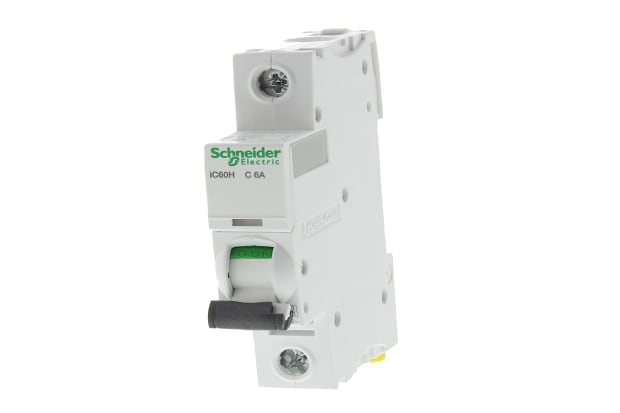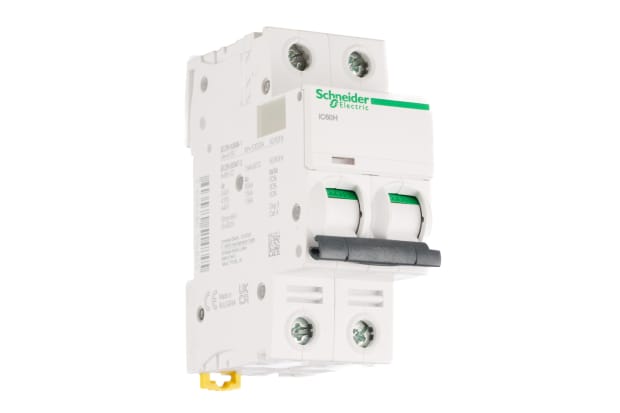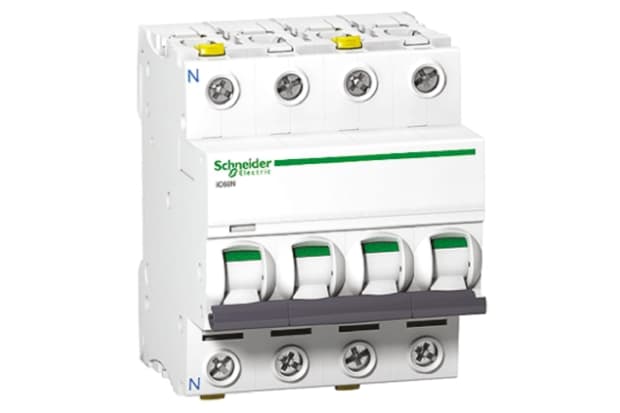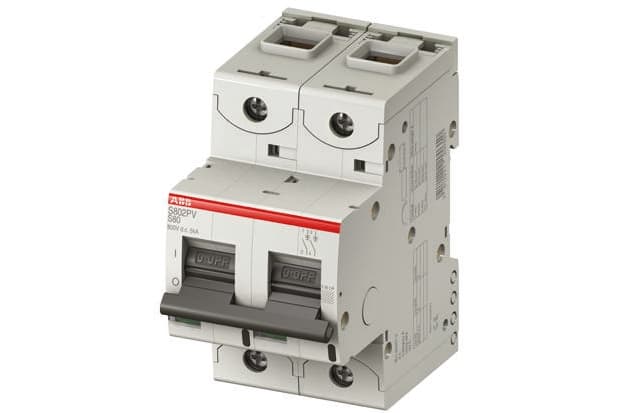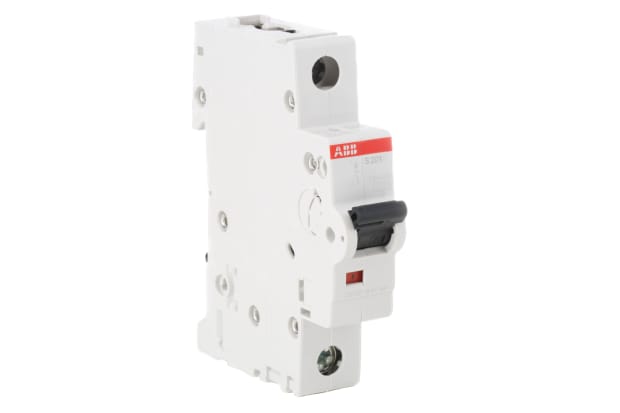- Published 10 May 2024
- Last Modified 10 May 2024
- 7 min
A Complete Guide to MCBs
What are MCBs and how do they work? Discover all you need to know in our comprehensive guide.

This guide to miniature circuit breakers (MCBs) explains everything you need to know about the types and sizes available. We outline the best brands and explain the function of MCBs in your electrical projects.
What is an MCB?
Let’s start with the basics – just what is a miniature circuit breaker? An MCB is an automatically operated electrical switch. Miniature circuit breakers are intended to prevent damage to an electrical circuit as a result of excess current. They are designed to trip during an overload or short circuit to protect against electrical faults and equipment failure.
MCBs are widely used as isolating components in domestic, commercial, and industrial settings. They form part of a broader family of more powerful circuit-breaking components.

How Does a Miniature Circuit Breaker Work?
Mini circuit breakers are triggered by overcurrent - electrical current that exceeds a designated safe current and makes use of a relatively robust mechanical mechanism designed to minimise failures and false alarms.
Excess current causes the bimetallic strip within the MCB to heat, bend, and trip. This releases a switch that moves the electrical contact points apart to confine the arc (electrical discharge). The arc is divided and cooled by an insulated metal strip called the arc chute. The contacts close again once the fault has been fixed and the MCBs are reset.
An MCB is designed to protect against both overloading and short-circuiting. These are detected differently using separate processes. Overload protection is provided by the bimetallic strip using thermal operation, whereas short-circuit protection is provided by the tripping coil via electro-magnetic operation.
If the discharge is especially high, the MCB will trip (activate) very quickly – within one-tenth of a second. When the overcurrent is closer to the safety limits, the component will be slower to respond.
Different MCB Types Explained
Several different MCB types are available – types A, B, C, D, K, and Z. However, the three key versions are type B, type C, and type D. Each is designed to be responsive to the likely strength of electrical surges in different settings. These variations are typically known as their ‘trip curve’ but can also be known as their tripping characteristics or overcurrent characteristics.
Let’s take a look at the differences between each primary type:
Type B MCBs
Type B circuit breakers are designed to trip if the current flowing through hits between three and five times the recommended maximum or ‘rated load’.
This is the most sensitive type of MCB, designed for domestic applications, and low voltage commercial settings where any current surges are likely to be small.
Type C MCBs
Type C circuit breakers are used for more powerful electrical devices where any surges are likely to be higher – typically commercial and industrial environments.
They are designed to trip at currents between five and ten times their rated load. Good examples include smaller electric motors and fluorescent lighting.
Type D MCBs
D-type MCBs are the least sensitive type, only activating when current surges to between ten and twenty times the recommended maximum.
D-rated MCBs are built for heavy-duty commercial and industrial devices where very strong current surges occasionally occur. Examples include welding equipment, X-ray machines, large motors, and uninterruptible power supply units.
Other MCB Types
A few more specialised MCB models are available. These include:
- Type K MCBs – these will trip when the current reaches eight to twelve times the recommended maximum. They are a good choice for motors
- Type Z MCBs – these are highly sensitive MCBs, tripping when current exceeds the rated load by only two to three times. They are used with more delicate devices prone to short circuits, such as semiconductors
How to Choose the Right MCB
The type of MCB that you should buy depends on the specifics of your device or installation. When shopping for an MCB, compare the following factors:
- The tripping characteristics
- The breaking capacity – the maximum current a circuit breaker can interrupt without destruction or releasing an arc. This needs to match the likely strength of any surges in the vicinity of the installation. Breaking capacities are measured in kiloamperes (kA), each of which is 1,000 amperes (amps), the standard unit of electrical current
- The number of poles or trippable switches within the MCB housing. Pole options include single, double, triple and neutral, and four-pole. Triple or three-pole models are common; these can simultaneously break the current on all three circuits if a fault occurs on any one
Chart Comparing Typical MCB Applications
MCBs by Brand
Key MCB brands are compared in the following chart:
Schneider Electric
Main Benefits:
- Excellent circuit protection
- Rigorously tested
Typical Applications:
- Wide range of applications; industrial and commercial
FAQs
Related links
- MCBs
- Eaton Auxiliary Contact MCB Accessory,
- Siemens 5SY41 5SY MCB Mini Circuit Breaker 16A 400V AC 10 kA...
- MCCBs
- Legrand 230V ac Circuit Breaker MCB
- Siemens 5SY41 5SY MCB Mini Circuit Breaker 25A 400V AC 20 kA...
- Siemens 5SY41 5SY MCB Mini Circuit Breaker 50A 400V AC 15 kA...
- Contactum MCB Mini Circuit Breaker
